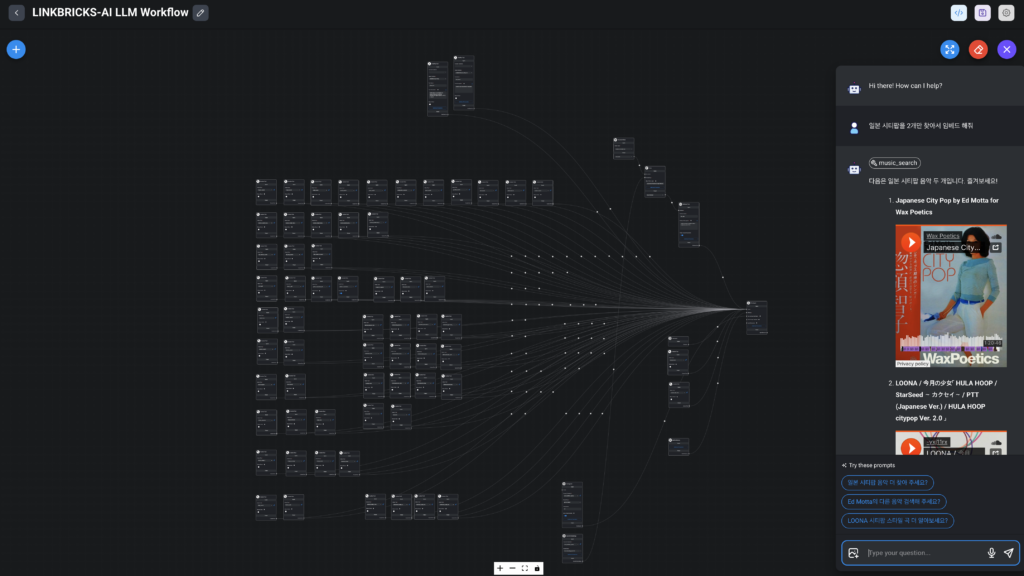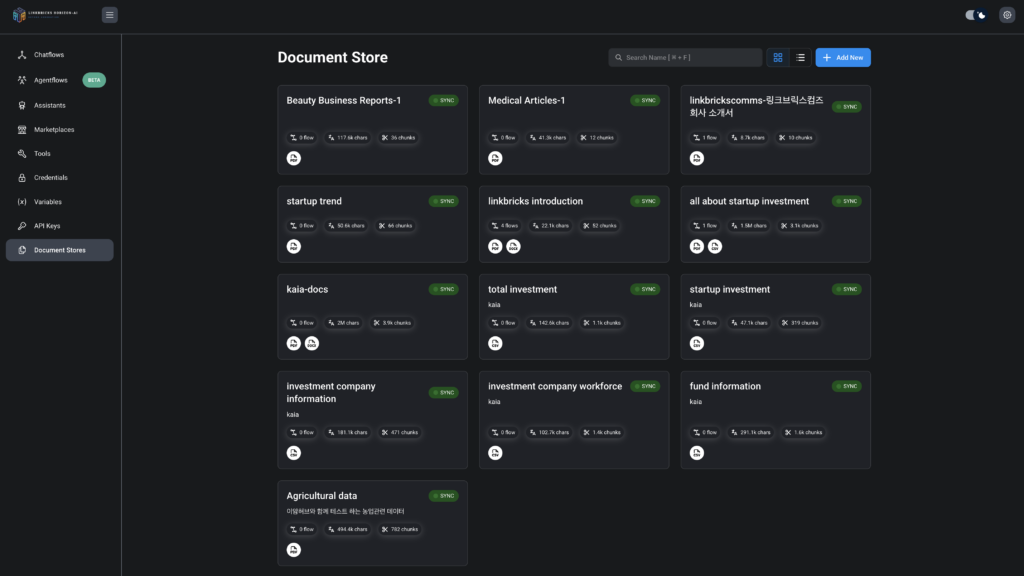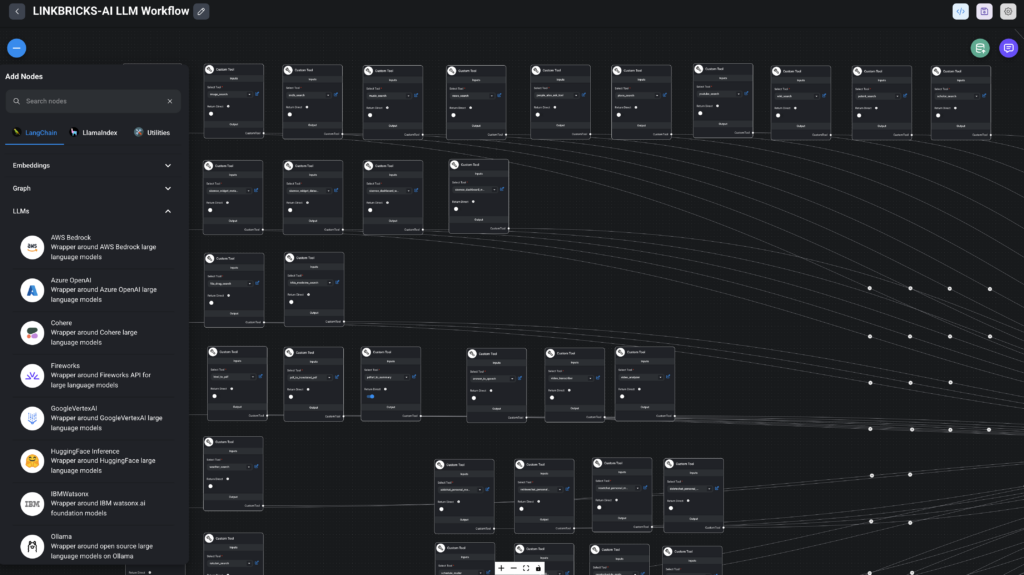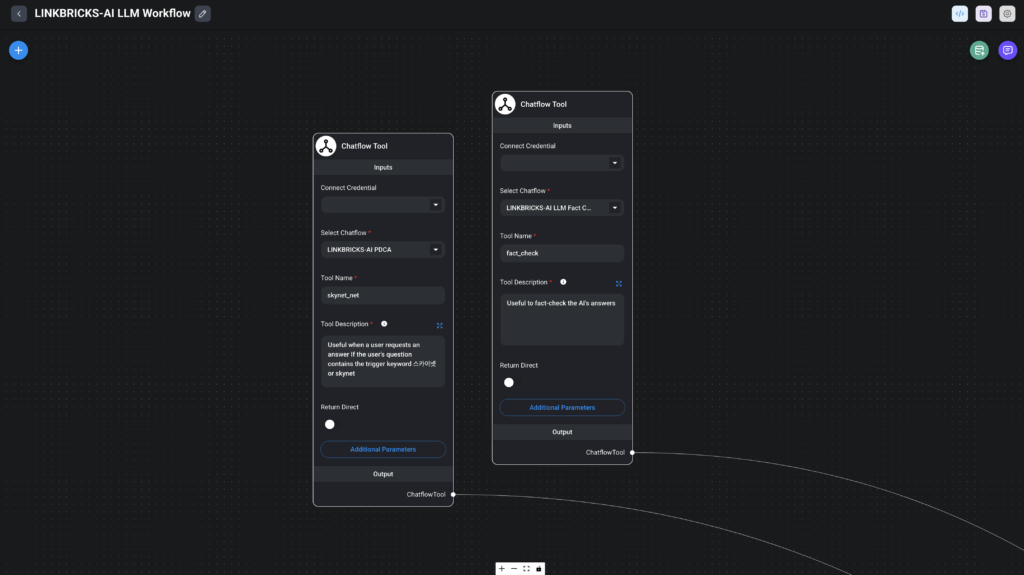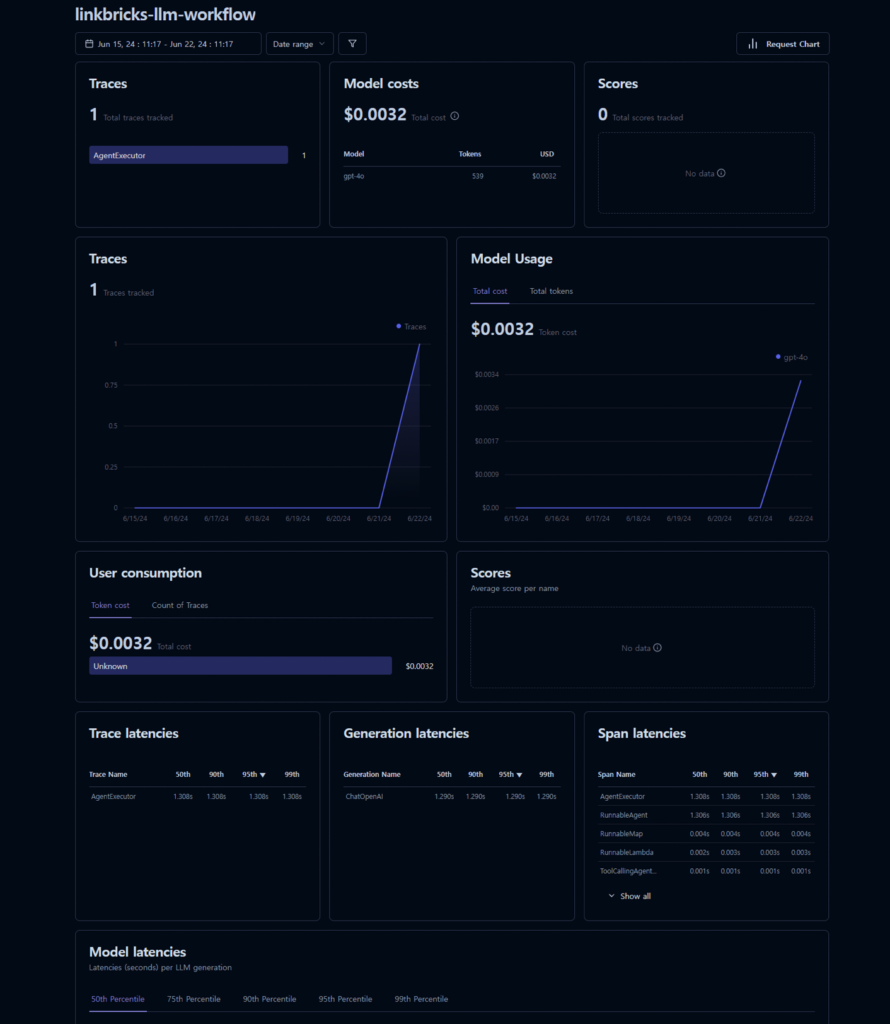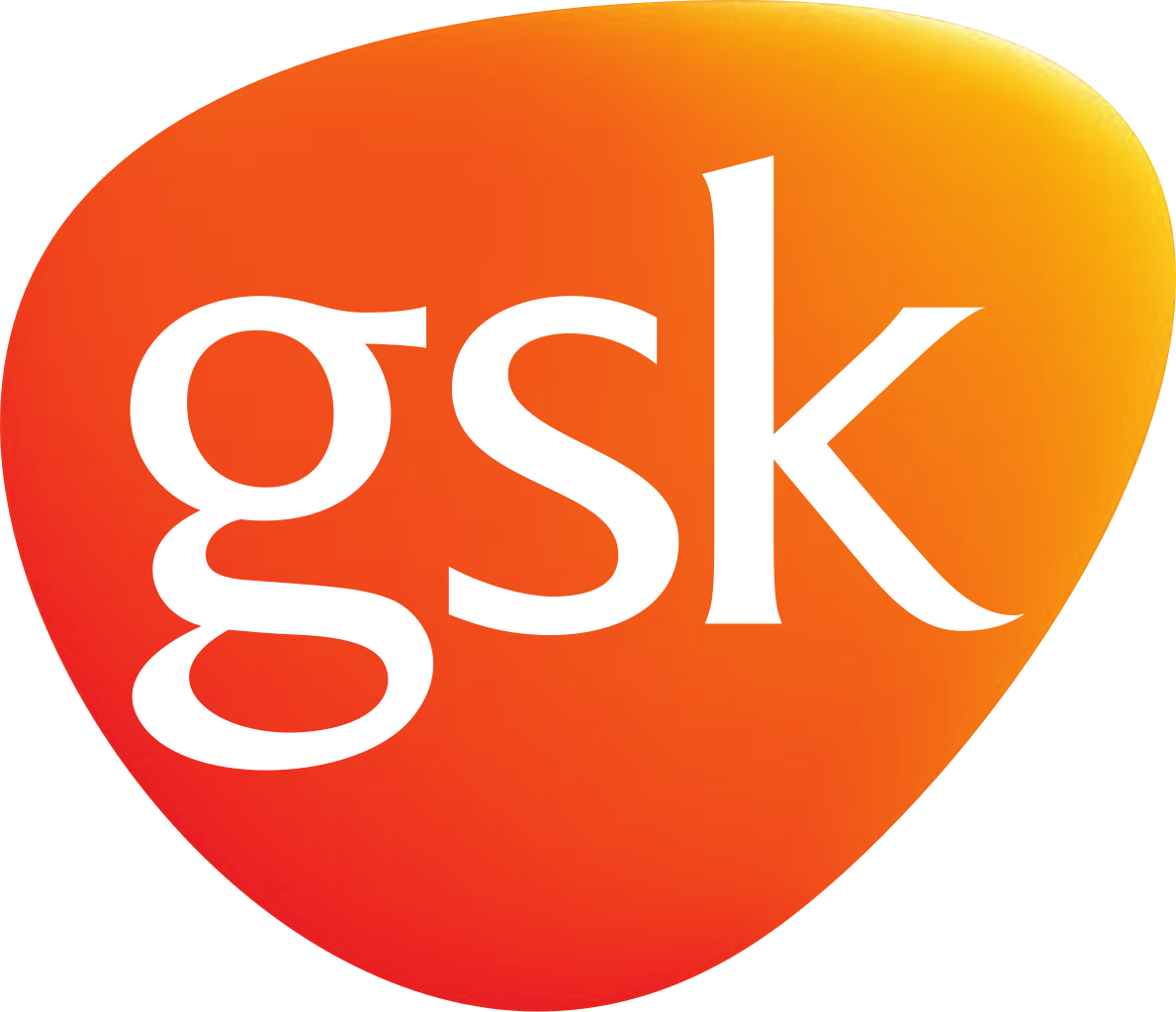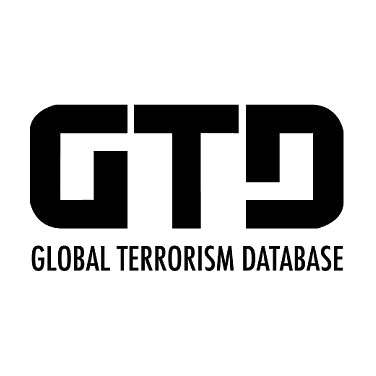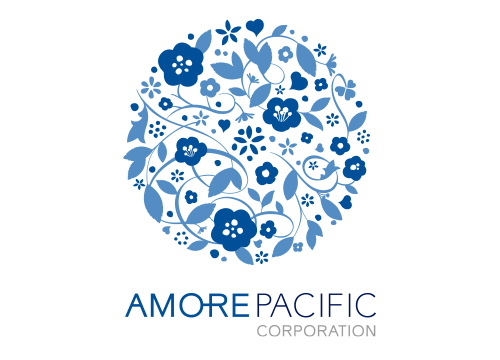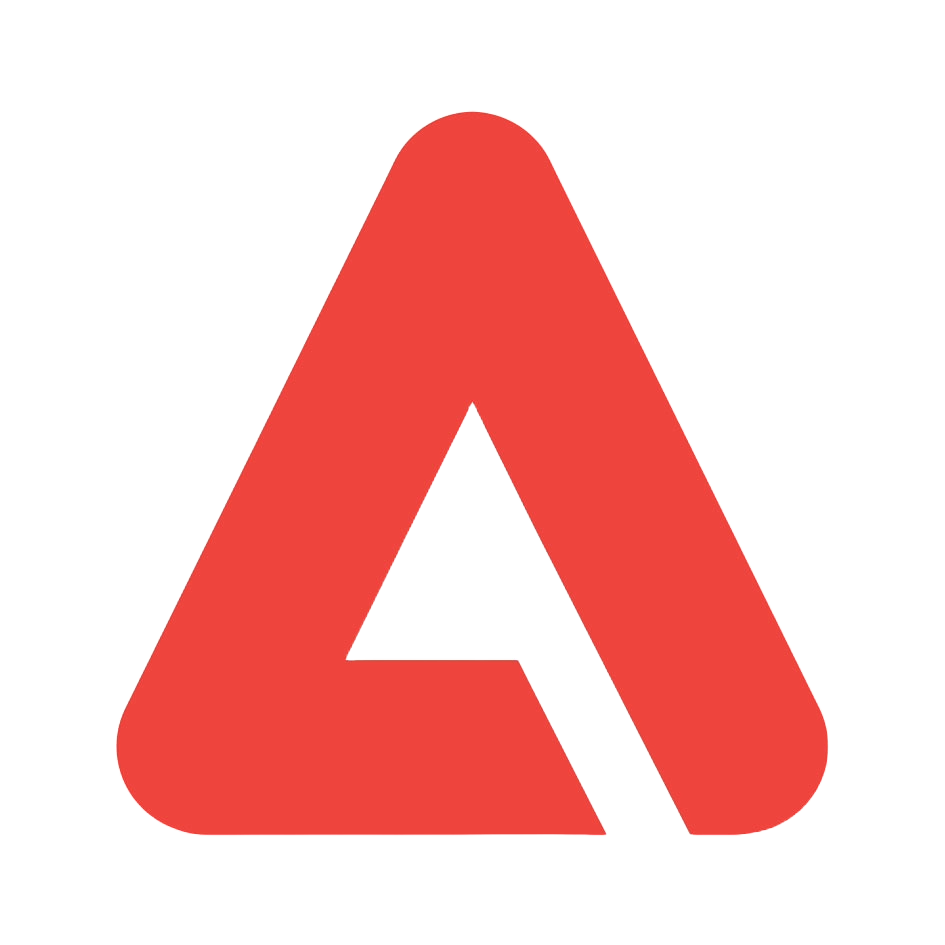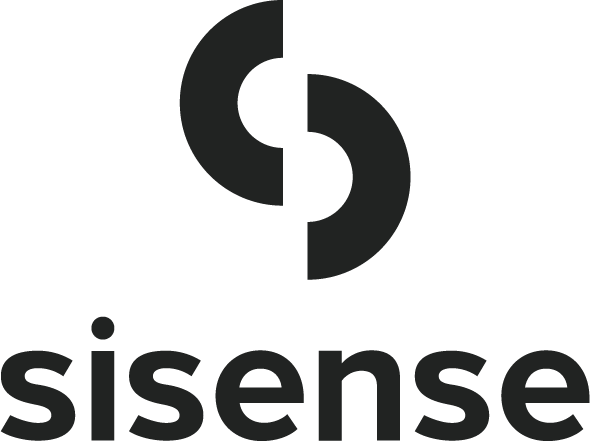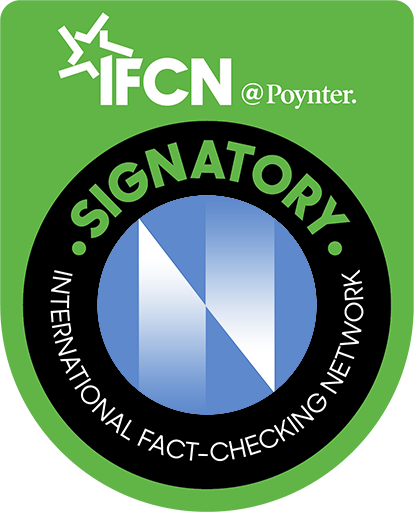HORIZON-AI
LLM WORKFLOW
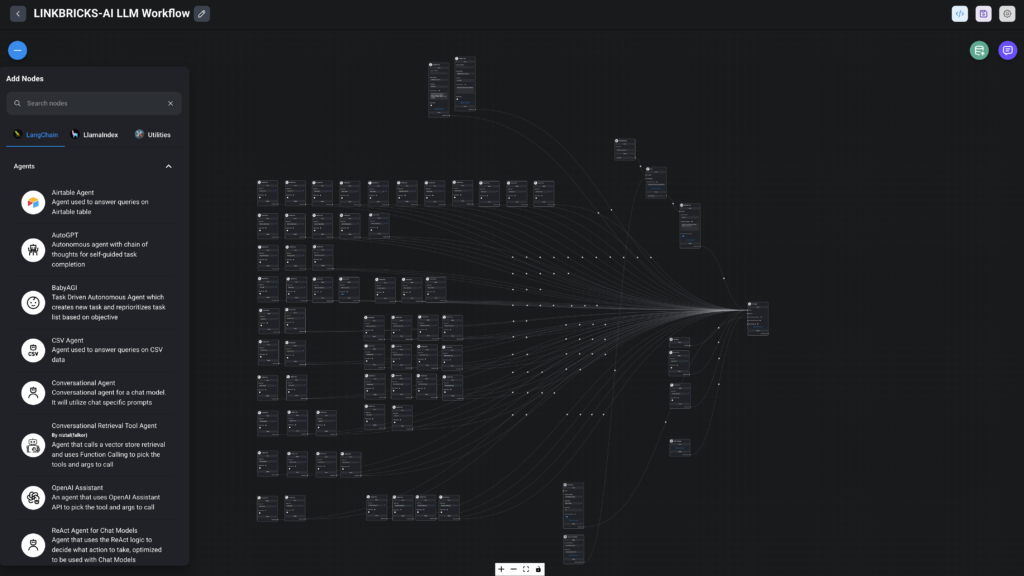
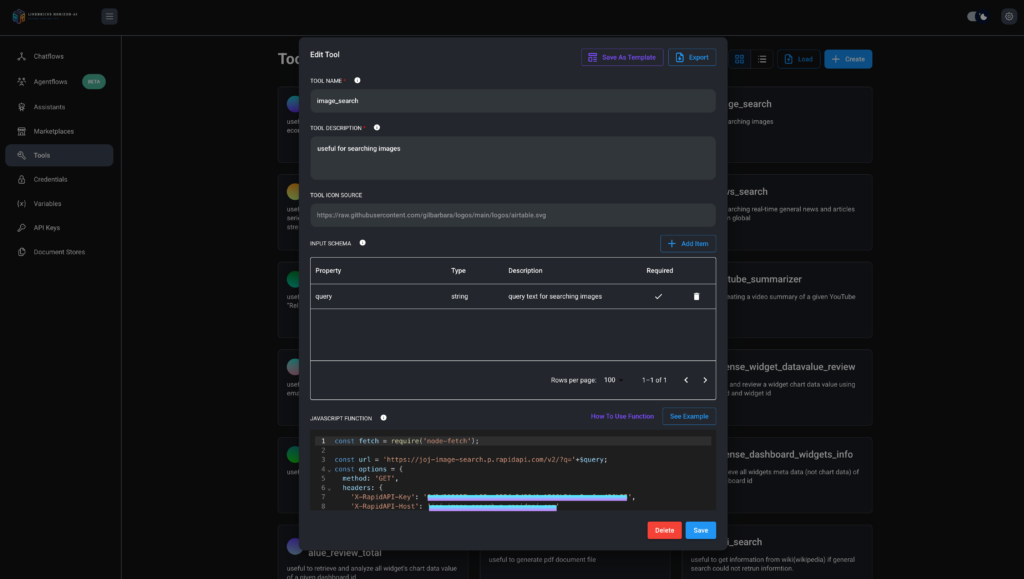
Linkbricks Horizon-AI LLM 워크플로우: 자연어 질의응답을 통해 비즈니스 로직을 실현하는 혁신적 솔루션
디지털 환경이 빠르게 변화하는 오늘날, 복잡한 비즈니스 목표를 달성하기 위해서는 기술과 자동화의 원활한 통합이 필수적입니다. LLM 워크플로우는 강력한 언어 모델(LLM)과 특화된 도구 및 에이전트를 연결하여, 자연어 질의만으로 복잡한 작업을 간단히 실행할 수 있도록 설계된 혁신적인 시각적 구성 솔루션입니다.
LLM 워크플로우는 **대규모 언어 모델(LLM)**의 능력을 활용해 다양한 도구와 에이전트를 연결하고, 비즈니스 운영에 필요한 복잡한 작업을 단순화합니다. 이 솔루션은 인간의 입력과 자동화된 프로세스를 연결하는 다리 역할을 하며, 복잡한 설정이나 기술적 전문 지식 없이도 쉽게 사용할 수 있습니다.
In today’s fast-paced digital landscape, achieving complex business goals requires seamless integration of technology and automation.
LLM Workflow is a cutting-edge, visual orchestration solution designed to simplify this process by connecting powerful language models (LLMs) with specialized tools and agents.
LLM Workflow leverages the capabilities of Large Language Models (LLMs) to interact with various tools and agents, enabling businesses to process natural language queries and execute intricate operations effortlessly. At its core, it bridges the gap between human input and automated processes, eliminating the need for extensive manual configuration or technical expertise.
Feature
Key Components
Tools
Tools are functional units designed to handle specific tasks, and they perform the following roles:
Data Collection: Retrieve data from external APIs, databases, and other sources.
Data Transmission: Deliver processed information to external systems or users.
Business Processes: Automate repetitive tasks such as report generation and transaction processing.
Agents
Agents serve as intermediaries that translate business logic into executable workflows, performing the following roles:
Domain-Specific Task Handling: Execute tasks tailored to specific domains (e.g., data analysis, customer interactions).
Seamless Integration: Collaborate with tools to execute complex operations.
Workflow Alignment: Ensure workflows align with business objectives.
LLM Integration
- The LLM acts as the central hub of the workflow, interpreting natural language queries and orchestrating the relevant tools and agents. It converts user input into structured commands, guiding the entire system to achieve its goals efficiently.
How It Works
Natural Language Query Input
Users input requests or instructions in plain language, eliminating the need for technical jargon.
Agent Execution
The LLM directs the request to the appropriate agent, which translates it into actionable steps.
Tool Interaction
Tools perform the required tasks, such as accessing data, sending notifications, or processing transactions.
Business Outcome Generation
The system aggregates results, providing actionable insights or achieving business goals with accuracy and efficiency.
Benefits of LLM Workflow
Efficiency: Simplifies complex workflows through natural language queries.
Scalability: Easily integrates new tools and agents to support business expansion.
User-Friendliness: Designed for ease of use, even without technical expertise.
Automation: Reduces manual efforts, enabling teams to focus on strategic objectives.
By leveraging LLM Workflow, businesses can elevate productivity, scalability, and innovation to new heights. Whether it’s automating processes, integrating systems, or supporting decision-making, LLM Workflow is ready to transform the way businesses operate.
특징
주요 구성 요소
도구(Tools)
도구는 특정 작업을 처리하도록 설계된 기능 단위로, 다음과 같은 역할을 수행합니다:- 데이터 수집: 외부 API, 데이터베이스, 기타 소스에서 데이터를 가져옵니다.
- 데이터 전송: 처리된 정보를 외부 시스템 또는 사용자에게 전달합니다.
- 업무 처리: 보고서 생성, 트랜잭션 처리 등 반복적인 작업을 자동화합니다.
에이전트(Agents)
에이전트는 비즈니스 로직을 실행 가능한 워크플로우로 변환하는 중간 관리자로, 다음과 같은 역할을 합니다:- 특정 도메인에 맞는 작업 처리 (예: 데이터 분석, 고객 상호작용).
- 도구와 원활하게 통합하여 복잡한 작업을 실행.
- 워크플로우가 비즈니스 목표와 일치하도록 보장.
LLM 통합
LLM은 워크플로우의 중심 허브로 작동하며, 자연어 질의를 해석하고 관련 도구 및 에이전트를 조율합니다. 사용자의 입력을 구조화된 명령으로 변환해 전체 시스템이 목표를 효과적으로 달성하도록 안내합니다.
작동 원리
자연어 질의 입력
사용자가 간단한 언어로 요청이나 지시를 입력합니다. 복잡한 기술 용어가 필요 없습니다.에이전트 실행
LLM은 요청을 적절한 에이전트에 전달하며, 에이전트는 이를 실행 가능한 단계로 변환합니다.도구와 상호작용
도구는 필요한 작업(데이터 접근, 알림 전송, 트랜잭션 처리 등)을 수행합니다.비즈니스 결과 도출
시스템은 결과를 취합하여 통찰력을 제공하거나 비즈니스 목표를 효율적이고 정확하게 달성합니다.
LLM 워크플로우의 장점
- 효율성: 자연어 질의를 통해 복잡한 워크플로우를 간단히 처리.
- 확장성: 새로운 도구와 에이전트를 쉽게 통합하여 비즈니스 확장에 대응.
- 사용자 친화성: 기술적 전문 지식이 없어도 쉽게 사용할 수 있도록 설계.
- 자동화: 수작업을 줄여 전략적 목표에 집중할 수 있도록 지원.
LLM 워크플로우를 활용하면 비즈니스 운영에서 생산성과 확장성, 혁신성을 새로운 차원으로 끌어올릴 수 있습니다. 업무 자동화, 시스템 통합, 의사결정 지원 등 다양한 분야에서 LLM 워크플로우가 비즈니스를 혁신할 준비가 되어 있습니다.
特徴
主な構成要素
ツール (Tools)
ツールは特定のタスクを処理するために設計された機能単位であり、以下の役割を果たします:
データ収集: 外部API、データベース、その他のソースからデータを取得します。
データ送信: 処理済みの情報を外部システムやユーザーに提供します。
業務プロセス: レポート作成やトランザクション処理など、繰り返しの業務を自動化します。
エージェント (Agents)
エージェントはビジネスロジックを実行可能なワークフローに変換する中間管理者として、以下の役割を果たします:
ドメイン特化型タスクの処理: 特定の分野に合わせたタスクを実行(例:データ分析、顧客対応)。
ツールとのスムーズな統合: ツールと連携して複雑な操作を実行。
ワークフローとビジネス目標の整合性確保: ワークフローがビジネス目標に一致するよう調整。
LLM統合
LLM(大規模言語モデル)はワークフローの中心的なハブとして機能し、自然言語での質問を解釈して関連するツールやエージェントを調整します。ユーザーの入力を構造化されたコマンドに変換し、システム全体が効率的に目標を達成できるように導きます。
動作の仕組み
自然言語でのクエリ入力
ユーザーは簡単な言葉でリクエストや指示を入力し、専門的な技術用語を必要としません。
エージェントの実行
LLMはリクエストを適切なエージェントに送信し、エージェントがそれを実行可能なステップに変換します。
ツールとの連携
ツールが必要なタスク(データアクセス、通知送信、トランザクション処理など)を実行します。
ビジネス成果の生成
システムが結果を統合し、インサイトを提供したり、ビジネス目標を正確かつ効率的に達成します。
LLMワークフローの利点
効率性: 自然言語でのクエリにより複雑なワークフローを簡単に処理。
拡張性: 新しいツールやエージェントを容易に統合し、ビジネスの成長に対応可能。
ユーザーフレンドリー: 専門的な技術知識がなくても簡単に使用できる設計。
自動化: 手作業を削減し、戦略的な目標に集中できるよう支援。
LLMワークフローを活用することで、ビジネス運営における生産性、拡張性、革新性を新たなレベルへ引き上げることが可能です。業務の自動化、システム統合、意思決定支援など、LLMワークフローはビジネスを変革する準備が整っています。
